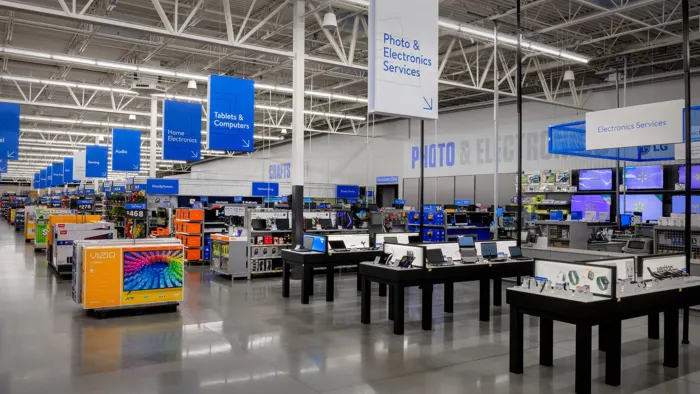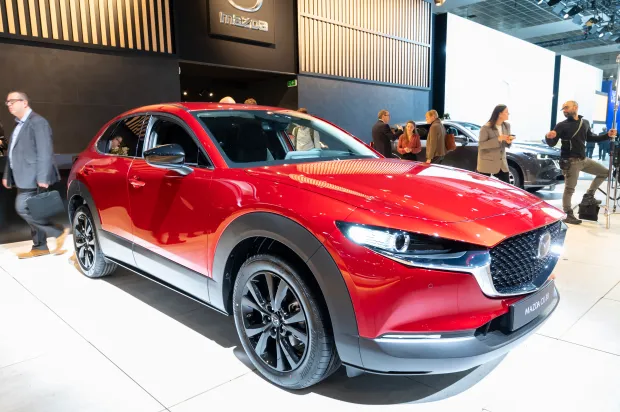Walmart’s New Delivery Approach: What the Major Change Means for Customers
According to The Street, In an age where social media and internet culture often receive criticism, one of the most remarkable advancements has been the proliferation of information and services through our online presence. With the rapid spread of data, people globally now have access to a vast reservoir of knowledge right in their pockets. This connectivity allows us to communicate with loved ones across the globe, explore virtually any topic of interest, and access a diverse array of goods more quickly than ever before.
Changing Expectations for Retailers
Many of us have come to take these conveniences for granted, particularly when it comes to shopping. The introduction of two-day free shipping by Amazon (AMZN) set a new standard in retail, creating a demand for faster delivery times. No longer willing to wait a week or more for shipments, consumers now expect next-day or even same-day delivery options. Major retailers like Walmart (WMT) and Target (TGT) have embraced this shift, often delivering products to customers’ doorsteps within hours of an order.
The Role of Fast Shipping in Retail Growth
Fast shipping has become a double-edged sword for retailers: while it can significantly boost sales, it also presents substantial logistical challenges. The intricate balancing act of managing millions of orders through various stages of the supply chain, while ensuring more than 90% accuracy in delivery, is nothing short of a logistical marvel. As Amazon continues to set the pace in fast and reliable shipping, Walmart has recognized the need to enhance its own capabilities to remain competitive.
With store locations within ten miles of 90% of the U.S. population, Walmart has strategically positioned itself to facilitate efficient delivery. Many Walmart stores now operate as dual-purpose facilities, functioning as warehouses that serve as last-mile fulfillment stations for rapid deliveries.
Also read: Stop & Shop Announces Last-Minute Closures: 17 Locations Shut Down Just Before Thanksgiving!
Exploring Innovative Delivery Options
Walmart is not solely focused on traditional delivery methods; it has also invested in alternative delivery solutions. Earlier this year, Walmart announced plans to expand its drone delivery services, aiming to reach nearly two million households in the Dallas-Fort Worth area, which represents approximately three-quarters of the metropolitan population. This expansion initially brought drone delivery to seven states, including Arizona, Arkansas, Florida, North Carolina, Texas, Utah, and Virginia.
However, just a year later, Walmart is scaling back its drone delivery operations in select cities to concentrate its efforts on refining its capabilities in Texas. DroneUp, a partner aiding in the fulfillment of airborne packages, announced the closure of 18 Walmart delivery hubs in Phoenix, Salt Lake City, and Tampa. This decision will result in a 17% reduction in staff associated with the drone project and will limit Walmart’s drone fulfillment to 15 locations:
- Dallas: 11 locations
- Bentonville, Arkansas: 3 locations
- Virginia Beach: 1 location
According to DroneUp CEO Tom Walker, the shift is aimed at enhancing automation, developing drones with higher payload capacities and longer ranges, and creating a scalable model. The demand in other cities simply did not warrant the costs and efforts involved.
Continuing Partnerships and Future Goals
Walmart continues to explore its drone delivery options in partnership with other providers, including Wing (backed by Google) and Zipline. In a statement, Walmart emphasized that its drone delivery program remains in the pilot phase. By concentrating its efforts on the Dallas-Fort Worth area, Walmart aims to gather valuable insights to potentially scale this innovative delivery method for its customers in the future.
Conclusion
As consumer expectations for fast and reliable delivery continue to rise, retailers like Walmart are adapting to meet these demands through innovative strategies. Whether through traditional shipping or emerging technologies like drone delivery, the race for rapid fulfillment is reshaping the retail landscape and enhancing the shopping experience for consumers across the nation.






